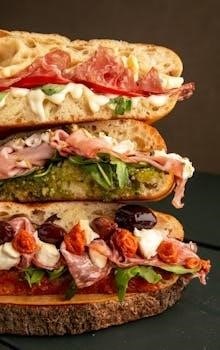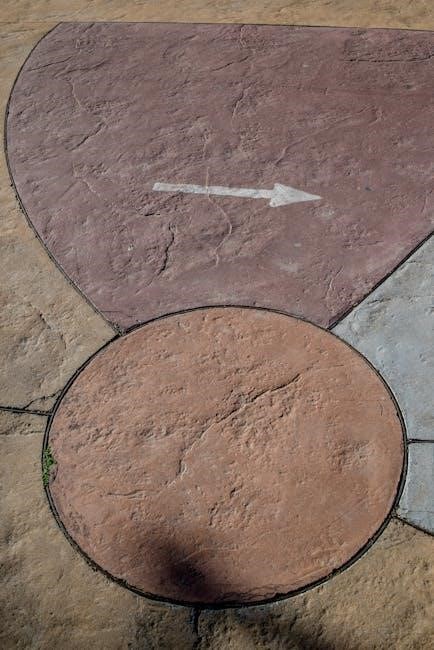Cheese knives are specialized tools, essential for any cheese lover, designed for cutting and serving different types of cheese. They come in various shapes and sizes, each suited for a specific cheese. A good set of cheese knives is as important as a good set of kitchen knives.
What are Cheese Knives?
Cheese knives are specialized utensils crafted for the precise task of cutting, slicing, and serving various types of cheese. Unlike standard kitchen knives, these tools are designed with specific blade shapes and handle styles to accommodate the unique textures and consistencies of different cheeses. From soft, creamy brie to hard, aged parmesan, each cheese requires a different approach to ensure clean cuts and optimal presentation. These knives often feature stainless steel blades for durability and hygiene, paired with comfortable wooden or plastic handles for easy grip. The diversity in their design reflects the varied nature of cheese itself, making them an indispensable part of any cheese lover’s toolkit. Investing in a quality set of cheese knives elevates the cheese-eating experience, preventing sticking, crumbling, and ensuring each slice is as enjoyable as the last.

Types of Cheese Knives
There is a wide variety of cheese knives, each designed for specific types of cheese. Some common types include soft cheese knives, hard cheese knives, and parmesan knives, each with unique features.
Soft Cheese Knife
A soft cheese knife is designed specifically for delicate cheeses such as brie or camembert, which have a soft interior that tends to stick to a regular knife. These knives typically feature a thin, straight blade, sometimes with holes or cutouts, which prevent the cheese from sticking and ensure clean cuts, preserving the shape of the cheese. The design minimizes the surface area of the blade that comes into contact with the cheese, reducing friction and making it easier to slice through. Some variations include a very slim blade for an exceptionally clean cut, while others have a slightly wider blade but with a thin profile. The handles are designed for comfortable grip, enhancing control and precision. These knives are essential for maintaining the delicate texture and presentation of soft cheeses.
Hard Cheese Knife
A hard cheese knife is built to tackle the densest of cheeses, such as aged cheddar, gouda, or parmesan. Unlike soft cheese knives, they typically feature a sturdy, thick blade that can withstand the pressure required to cut through hard cheeses. Some hard cheese knives have a pointed tip, useful for breaking off chunks, while others possess a strong, sharp edge for cutting rinds. Often, these knives have a durable handle that offers a firm grip. The blade may be a solid piece of steel or have a serrated edge, ideal for creating clean slices and pieces, and minimizing the crushing of the cheese. Certain hard cheese knives incorporate double offset handles, allowing for smooth slices through an entire wheel without the user hitting the cutting board with their knuckles. These knives are vital for maintaining the integrity of the cheese during serving.
Parmesan Knife
The parmesan knife, also known as a heart knife, almond knife, or spade knife, is a specialized tool designed for breaking off pieces of hard, dry cheeses like Parmesan. These knives often feature a pointed, arrowhead-shaped blade, useful for piercing the cheese rind and breaking it open. The blade may also be shaped like a shark tooth. The unique design allows for controlled crumbling and precise portioning, avoiding messy cuts. This knife is not typically used for slicing but rather for creating small, irregular chunks, ideal for enjoying the flavor and texture of aged cheeses. A sturdy handle ensures a firm grip, while the shape of the blade minimizes crumbling and helps maintain the cheese’s overall appearance. The parmesan knife is a must-have tool for any cheese enthusiast who enjoys the intense flavors of aged hard cheeses.
Flat Cheese Knife
The flat cheese knife, sometimes referred to as a cheese chisel, is characterized by its broad, flat blade with a sharp, straight edge. This knife is designed for cutting and serving semi-soft to semi-hard cheeses, where it excels at creating clean, even slices. The flat blade allows for a downward cutting motion, allowing the user to effectively break off chunks or to cut portions from a larger wedge without crushing the cheese. It can also be used to shave or chip aged hard cheeses, ensuring they are served in attractive, bite-sized pieces. Its broad surface can also be used to serve the cheese after cutting. The flat cheese knife is a versatile tool that is a welcome addition to any cheese board, perfect for a variety of cheeses and cutting styles.
Offset Cheese Knife
The offset cheese knife is uniquely designed with a handle that is raised above the blade, creating an offset. This particular design serves a specific purpose, particularly when dealing with soft, spreadable cheeses. The offset handle prevents the user’s knuckles from coming into contact with the cutting board or the cheese itself, allowing for a smooth and clean spreading motion. It is also beneficial when cutting through softer cheeses, as it provides greater control and helps to prevent the cheese from sticking to the blade. The offset cheese knife is perfect for ensuring that delicate cheeses are served with minimal mess and maintain their shape. Its unique design makes it an essential tool for any cheese lover who appreciates presentation;
Spreader Knife
The spreader knife is a must-have tool for any cheese enthusiast, specifically designed for handling soft and spreadable cheeses. Unlike knives with sharp blades, the spreader knife typically features a dull, rounded blade, or a blade with a wide flat surface. This design is ideal for scooping and spreading cheeses like cream cheese, ricotta, or soft goat cheese onto crackers, bread, or other accompaniments. The absence of a sharp edge ensures that the soft cheese is handled gently, without tearing or damaging its delicate texture. The spreader knife is essential for creating beautiful cheese boards, allowing for easy and elegant application of various soft cheeses.
Pronged Cheese Knife
The pronged cheese knife, often featuring a forked tip, is a versatile tool designed for both cutting and serving cheese, particularly semi-hard and hard varieties. The sharp edge of the blade allows for clean slicing, while the forked tip provides a convenient way to pick up and serve the cheese pieces. This dual-functionality makes the pronged cheese knife an excellent addition to any cheese board. It is especially useful for cheeses that are too firm to be easily picked up with a regular knife. The prongs provide a secure grip, preventing the cheese from slipping while being transferred, adding a touch of elegance to the cheese presentation. The prongs also help to hold the cheese in place while slicing.

Specific Cheese Knife Uses
Different cheese knives are designed for specific tasks. Using the correct knife ensures clean cuts and proper presentation, enhancing the overall cheese experience. Choosing the right tool is essential for each type of cheese.
Cutting Soft Cheeses
Cutting soft cheeses like brie or camembert requires a delicate touch and the right tool. Soft cheeses tend to be sticky, making it challenging to achieve clean cuts with a regular knife. A soft cheese knife typically features a thin, straight blade or one with holes, which helps to prevent the cheese from sticking. This design allows for smooth and even slices without tearing or crushing the cheese. The thin blade glides effortlessly through the soft interior, preserving its shape and texture. Some soft cheese knives also have a forked tip, which aids in serving the cut pieces. The key is to use gentle, even pressure to make clean, presentable cuts, maintaining the integrity of the delicate soft cheese. Avoid using a knife with a thick blade, as it will crush the cheese.
Cutting Hard Cheeses
Cutting hard cheeses like Parmesan or aged cheddar requires a sturdy and robust knife designed to handle their dense texture. Unlike soft cheeses, hard cheeses need a knife with a strong, rigid blade capable of breaking through their tough exterior. A parmesan knife, for example, often features a pointed tip for breaking off chunks or a sharp edge for cutting rinds. A flat cheese knife, or chisel, can be used to shave or chip pieces off aged hard cheeses. The key is to use firm, controlled pressure to create clean and manageable pieces. Using the wrong type of knife can result in uneven cuts, crumbling, and even injury. A hard cheese knife is essential for presenting these cheeses properly and safely.

Care and Maintenance

Proper care is essential for maintaining your cheese knives. Cleaning them promptly after use helps prevent build-up and keeps them in top condition. The specific cleaning method depends on the material of the knife.
Cleaning Cheese Knives
Cleaning your cheese knives properly is crucial for maintaining their quality and longevity. The best method depends largely on the material of the blade and handle. Stainless steel blades are generally dishwasher safe, but hand washing with warm, soapy water is often recommended to preserve their sharpness. Always dry your knives thoroughly immediately after washing to prevent rust and water spots. Wooden handles should be hand washed and dried promptly to avoid damage and warping. Avoid abrasive cleaners that could scratch or dull the blades. For tougher residue, a gentle scrub with a soft sponge will suffice. Regular cleaning after each use will keep your cheese knives performing at their best and ready for your next cheese board.
Choosing the right cheese knife can significantly enhance your cheese experience. Understanding the different types and their uses allows you to select the perfect tools for your cheese needs. Investing in a good set is worthwhile.
Choosing the Right Cheese Knife
Selecting the ideal cheese knife involves considering the types of cheeses you frequently enjoy. For soft cheeses like brie, opt for knives with thin, straight blades or those with holes to prevent sticking. Hard cheeses, such as Parmesan, require a sturdy knife with a pointed tip for breaking off chunks. Semi-hard cheeses benefit from flat blades that can slice cleanly without crushing. Think about the cheese’s texture and density when making your decision. Having a variety of knives allows you to handle different textures. A good set of knives is a great investment for any cheese lover, ensuring the perfect cut and presentation every time. Don’t hesitate to experiment with different shapes and sizes to find what suits your needs.



